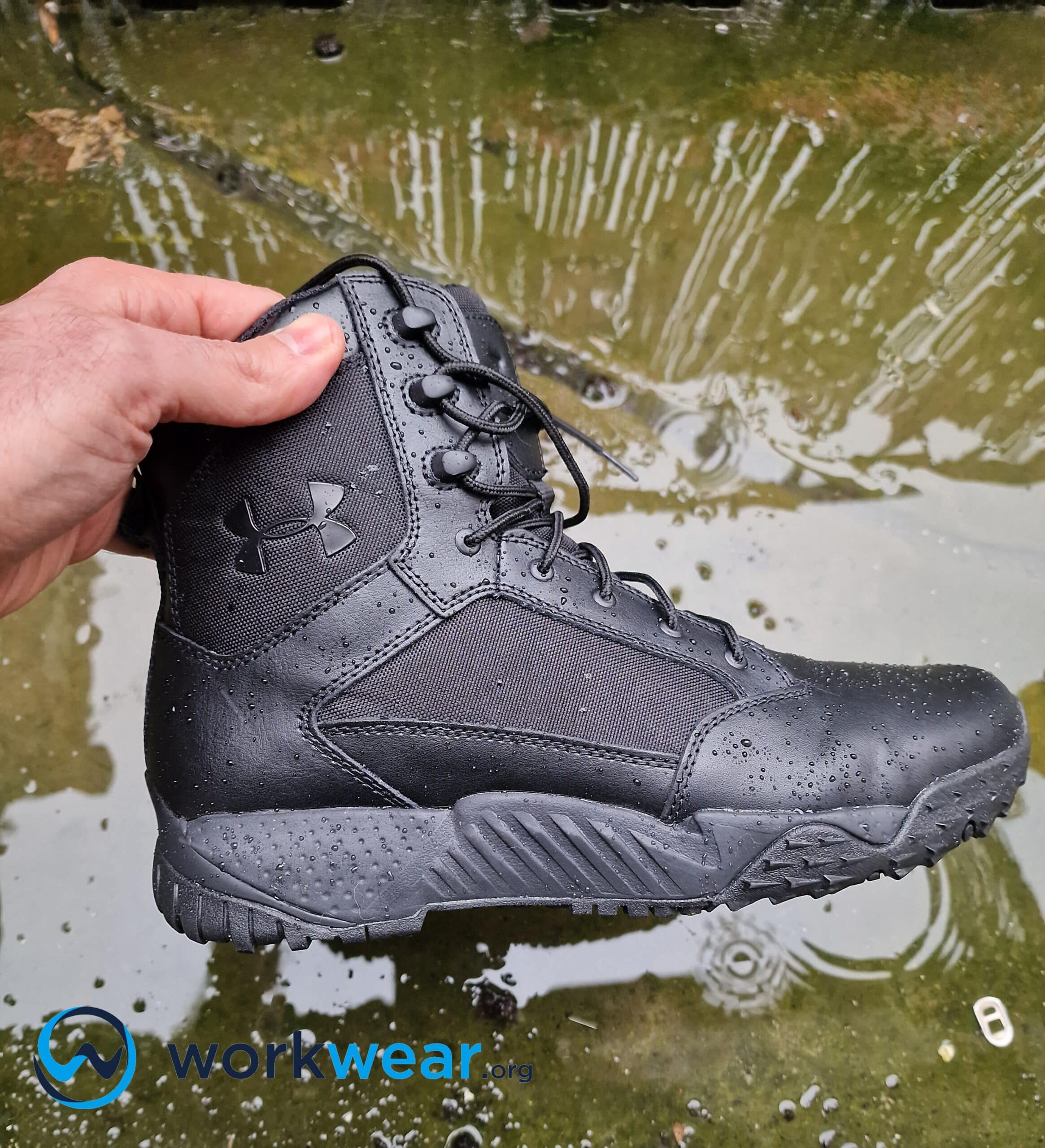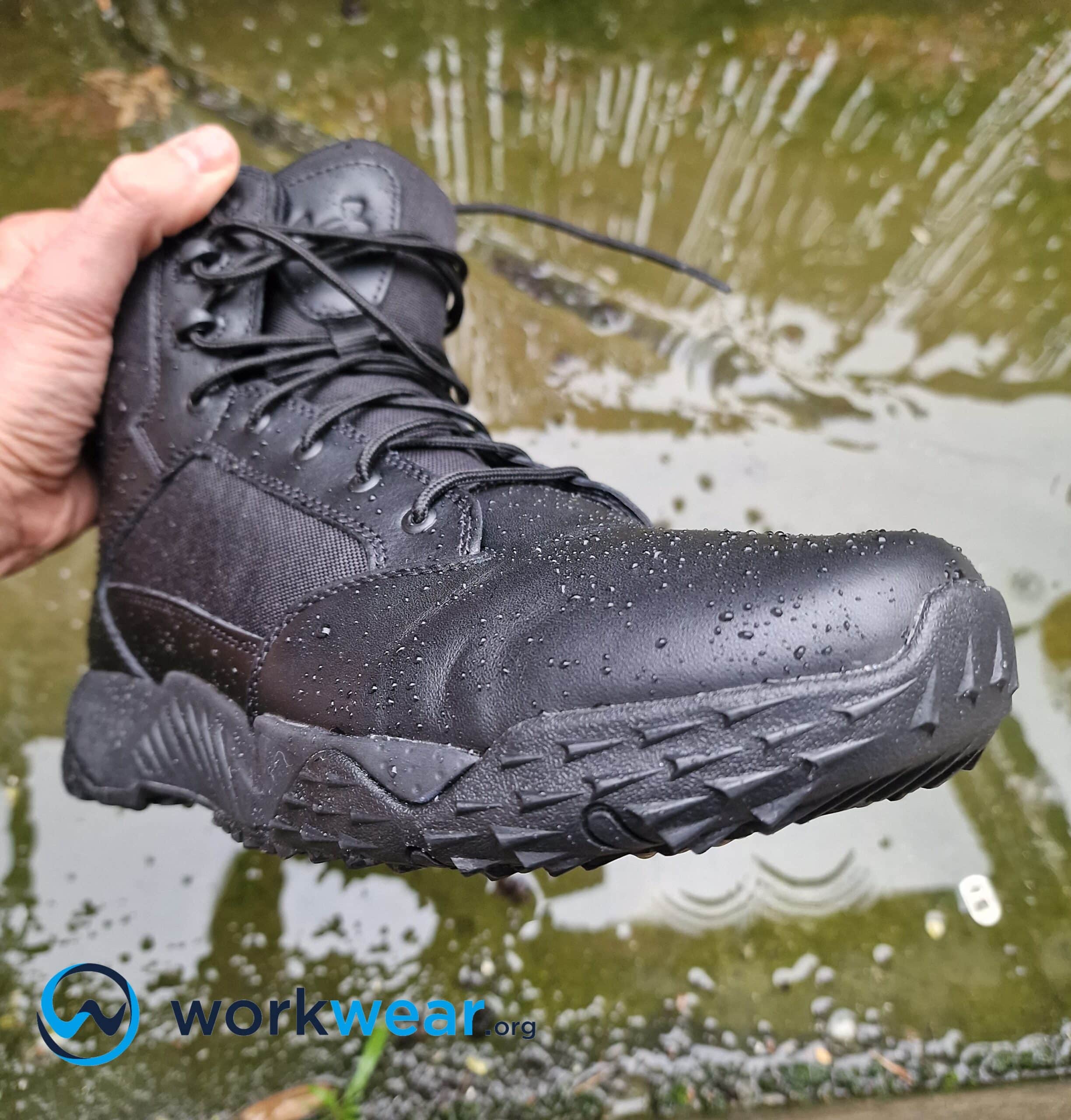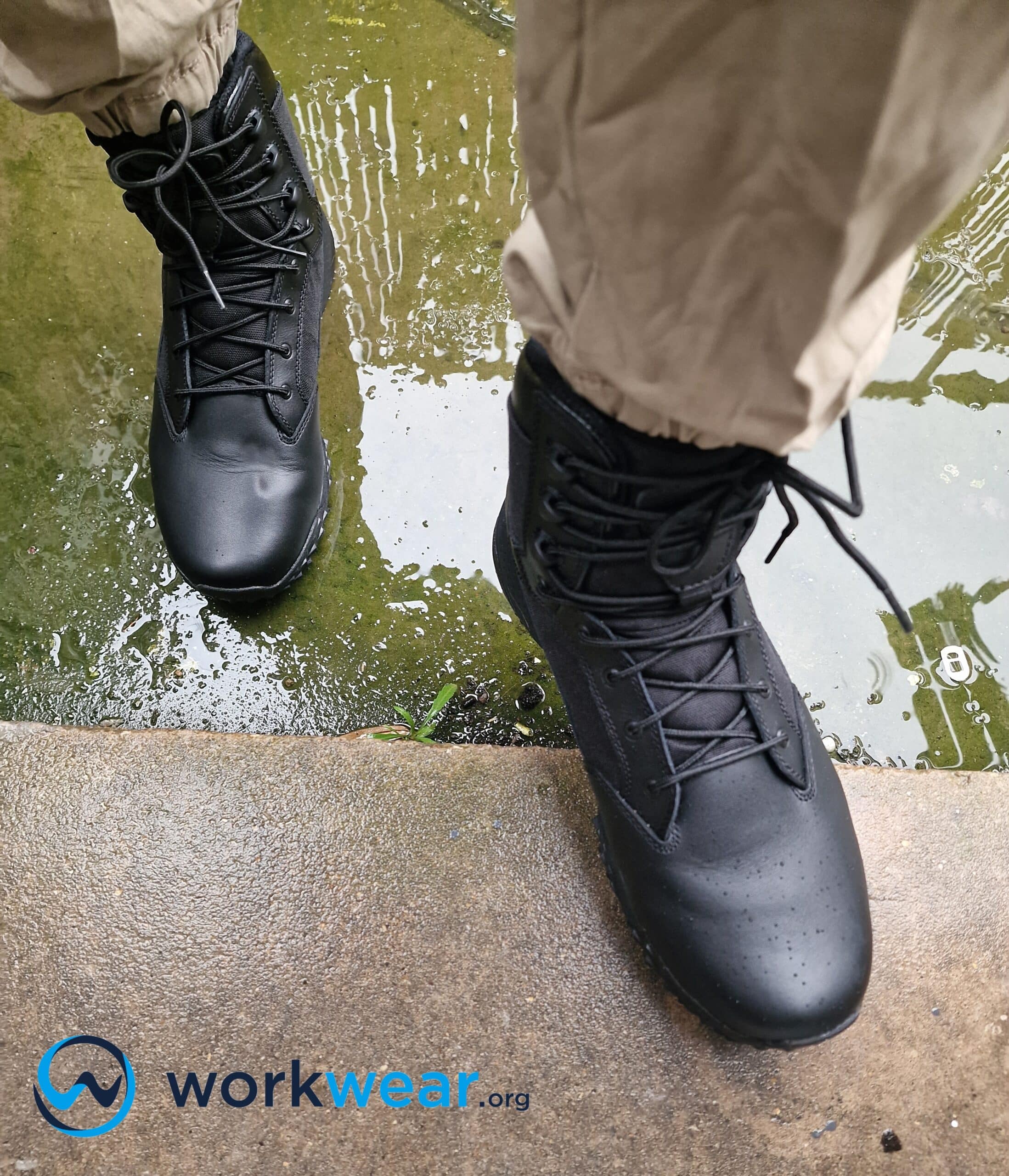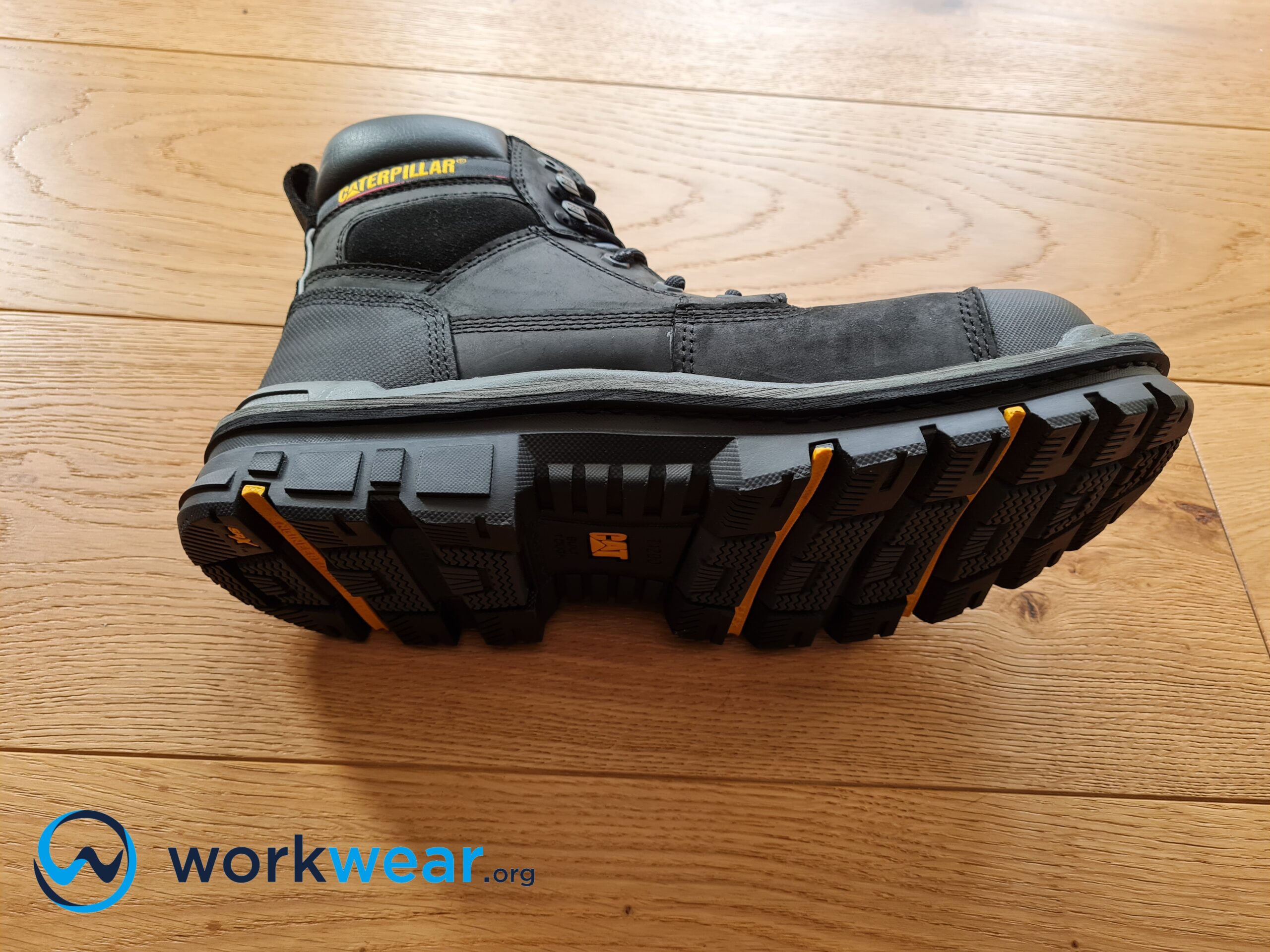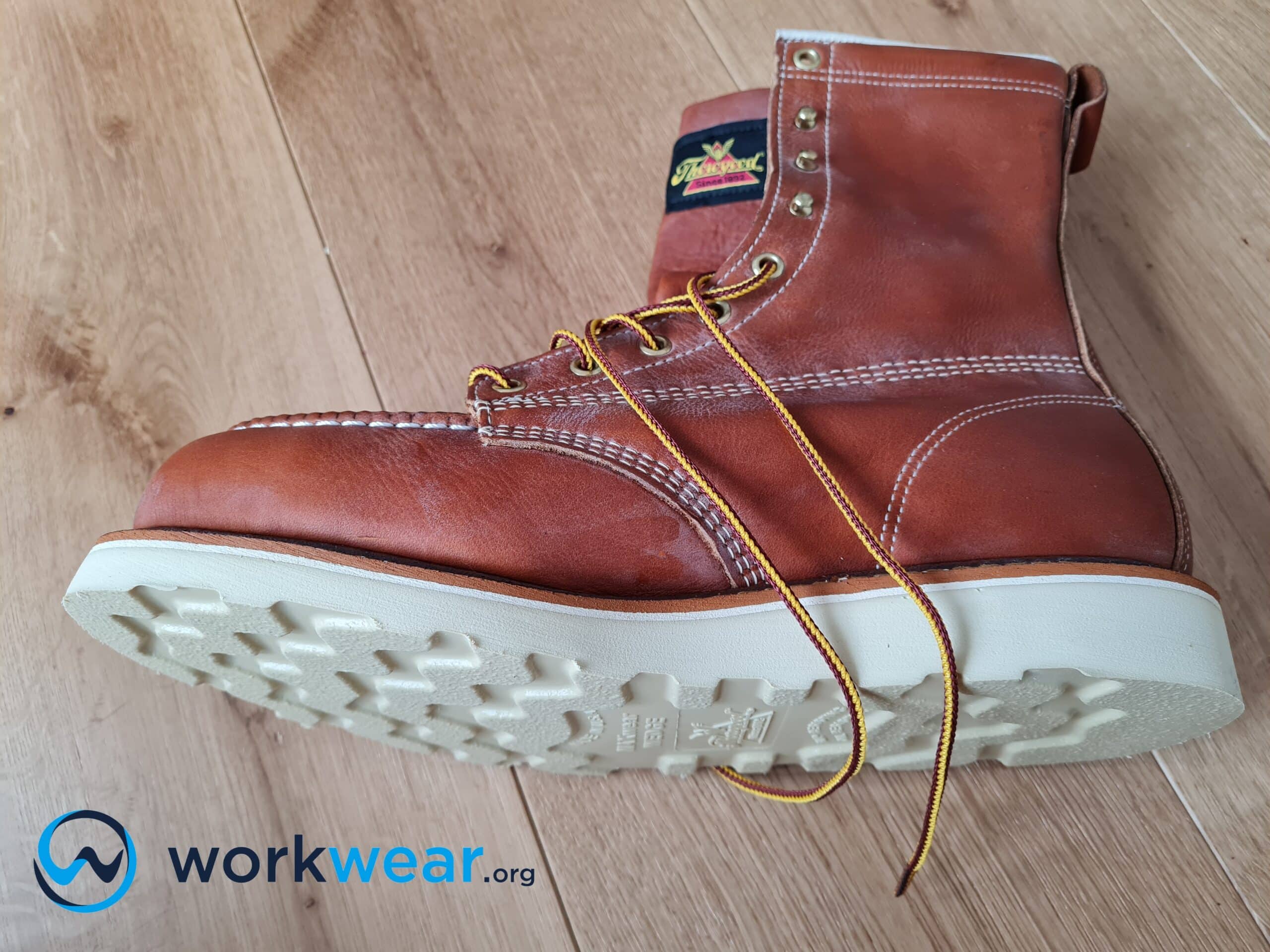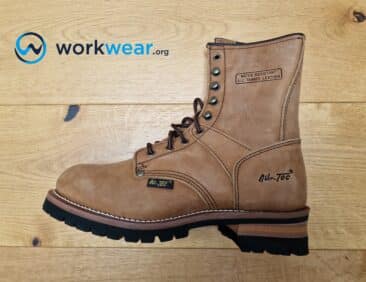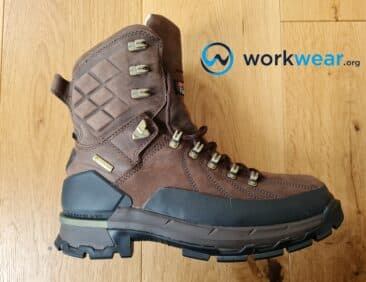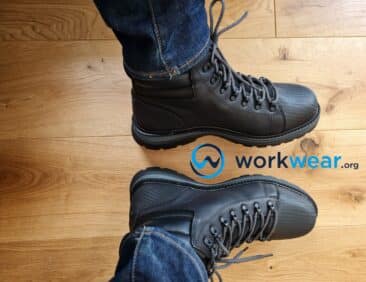Can You Hike With Work Boots
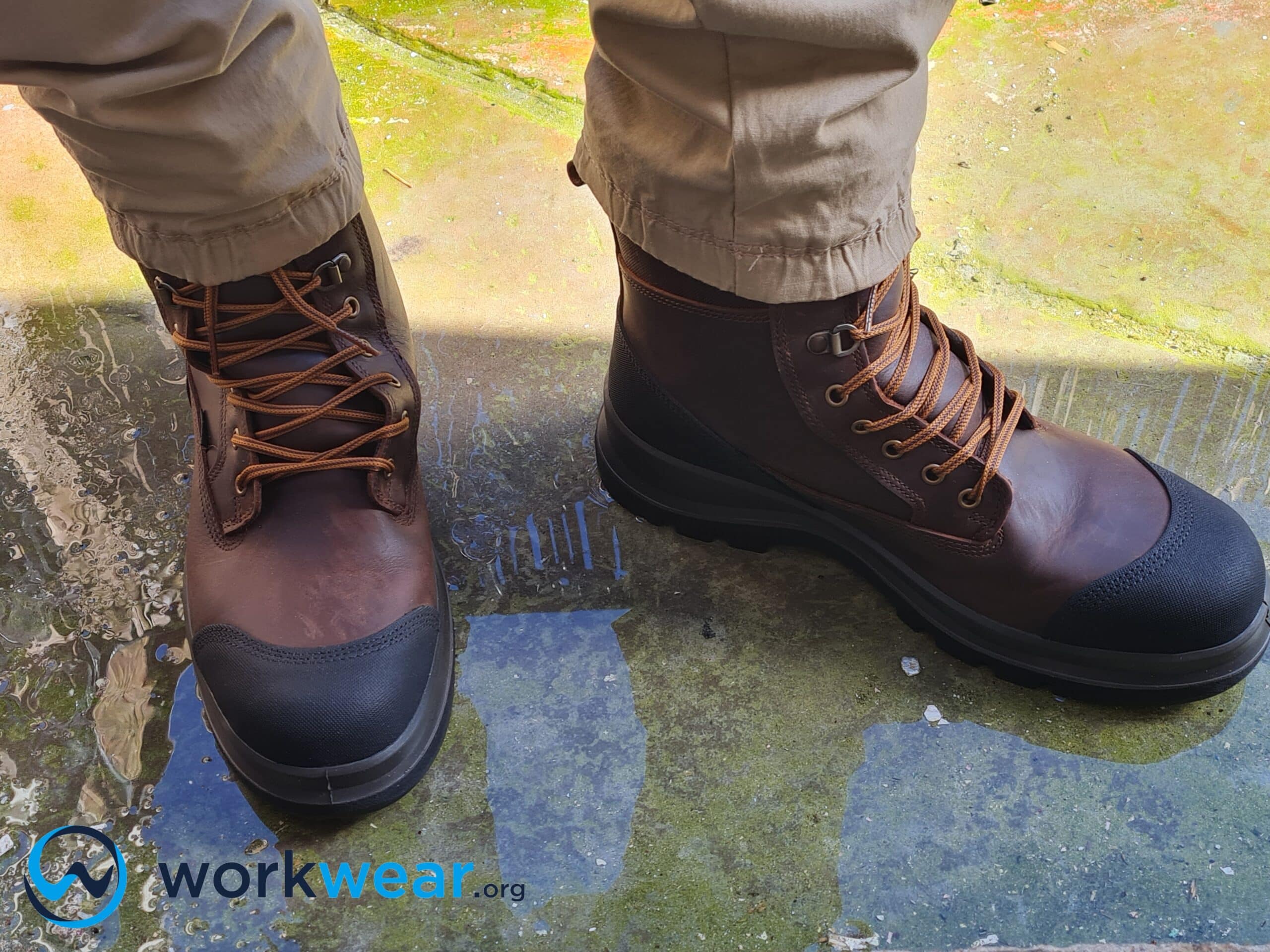
Work boots are essential for keeping your feet comfortable while busy at work. They’re built with protective features that enhance foot safety in various work conditions and are also designed to keep the feet supported throughout the day. While their profiles make your life much easier while you’re on the job, work boots can also be versatile enough to be used in different settings. Depending on the boots’ construction, they may even be tough enough to withstand challenging outdoor conditions, such as the ones that hikers are bound to encounter.
But can you hike using work boots?
The short answer is yes – you can use work boots for hiking. However, you’ll need to consider a couple of things first before you plan on going on a hiking trip with only your work boots to rely on.
Work boots are built to be tough enough to keep up with demanding job environments, and because of their safety toes, they are typically heavier and more inflexible than hiking boots. You could use work boots for hiking but ensure they are lightweight, flexible, and have high-traction soles, as you’ll need a strong grip to maintain your secure footing in rocky or slippery ground conditions.
Factors to Consider if You Want to Use Work Boots for Hiking
Work boots can be used for hiking, but to ensure that you’ll enjoy your activity without compromising your safety, here are some things you’ll need to consider.
Hiking Conditions
It’s always a good idea to check the conditions you’ll be hiking in, especially if you’re using footwear that’s not specifically designed for the activity. For example, knowing what terrain you’ll need to navigate can help you prepare, making it easier to determine if your work boots are up to the task. The length of the hike (distance to be covered and time spent walking) will also need to be considered because some work boots may not be suitable for walking on challenging trails over a long period.
Boots’ Materials & Design
Work boots are constructed to provide support, comfort, and protection for the feet in various job environments. Only some boots for work are suitable for the challenging outdoor conditions that can be expected when going for a hike. For example, work boots made with thin leather won’t stand a chance when used for hiking for hours in bad weather. On the other hand, low-cut work boots or those without good ankle support won’t be able to protect the ankle from accidentally twisting while walking on loose soil.
Weight of the Boots
Hiking is much easier and more comfortable to do with lightweight footwear. However, depending on their construction, work boots may be too heavy to be used comfortably for long hours of walking, especially on challenging terrains. This is especially true for work boots with thick leather and aggressive rubber soles, such as those built into logger boots that are often heavy. However, some work boot designs, such as hunting boots or tactical boots, may be lightweight enough to be used to walk for hours without causing discomfort.
Sole Construction
The soles of work boots are designed primarily to support the feet and prevent slipping in work environments. Most of these boots have tough, thick soles to keep up with demanding jobs, but the heavy-duty structures add a lot of weight. In addition, work boots with heavy soles won’t be suitable for hiking as they’ll drag uncomfortably on the feet before long. Heavy-duty soles can also restrict movements if they’re not flexible enough, making it more difficult to navigate varying ground conditions.
Features of Work Boots that are Suitable for Hiking
Strong Traction
Work boots with grippy soles work well for low-traction surfaces, such as unstable ground conditions encountered while hiking. The strong traction helps maintain stable footing while walking on uneven surfaces, such as loose soil or rocky terrains while hiking. It also helps hiking safer when it’s necessary to navigate slippery terrains, especially when going on an outdoor adventure in bad weather conditions. Using work boots with weak traction while hiking can increase the risk of slipping or falling while walking on tricky surfaces, which can lead to serious injuries.
Waterproofness
Hiking involves going through and over different environments that aren’t always completely dry since they’re exposed to the elements. If using work boots for hiking, it’s best to choose ones made with waterproof materials that stop mud, water, and other moisture sources from seeping into the footwear. Waterproof work boots can keep the feet dry throughout the hike, making it more enjoyable, with the feet protected against uncomfortable wetness when it rains or while walking in muddy settings.
Comfortable Cushioning
Hours of hiking can be brutal to the feet, so choosing the most comfortable footwear is important. If using work boots for hiking, go for the ones built with generously cushioned interiors to keep the feet comfortable while walking for extended periods. A softly padded footbed will protect the foot from pressing too firmly into the hard ground and can also help absorb the impact caused by continuous walking. It would also help if the materials around the foot were just as soft or smooth, making it easier to continue walking for most of the day without painful friction that can lead to blisters.
Flexibility
It’s much easier to hike if nothing is getting in the way of your agile movements. Hiking boots are designed to flex easily with each step, but some work boots or tactical boots are just as flexible. This quality enables the boots to support the feet while allowing them to move naturally, so it’s easier to go over tough terrains without putting too much stress on the foot and leg muscles. It can also be easier to cover more ground when using flexible work boots because they’ll allow the feet to move efficiently and more quickly without causing discomfort.
Durable Construction
Work boots that will be used for hiking need a durable construction to keep up with tough environments. High-quality materials and sturdy profiles allow work boots to protect the feet against workplace hazards and will just as easily guard the feet against safety threats in challenging outdoor settings. In addition, work boots with durable construction won’t easily fall apart when used for hours of walking on rough terrains, allowing their high-performance features to do their jobs with long-term benefits – without getting damaged prematurely.
Ankle Support
Different ground conditions will most likely be encountered when hiking. Outdoor settings don’t have the smoothest surfaces to walk on, so it’s important to have footwear that can keep the ankle supported so it won’t easily twist while walking on rough roads or sloping ground. Work boots that reach above the ankles with padded or supportive structures can stabilize them so they’re securely in place. Strong ankle support makes walking more enjoyable and easier to manage, even at a hurried pace, because the ankles are protected from painful twisting.
Safety Toes
Work boots with safety toes protect the sensitive toe area against falling objects while working and doing outdoor explorations. The safety toe caps form barriers that stop compression and impact hazards from seriously harming the feet. These safety toes protect the feet while hiking in case branches, rocks, and other heavy objects are suddenly dropped onto the boots, especially from elevated areas. The toe enhancements will also prevent serious injuries in case large objects- such as boulders – accidentally roll on top of the boots.
Work Boot Styles that are Unsuitable for Hiking
Most work boots have features essential for walking and exploring the outdoors, but some types are not suited for hiking activities.
Logger Boots – Logger boots are designed to take on extremely harsh outdoor settings in varying weather conditions. However, they’re not suitable for hiking because their heavy and bulky structures can be uncomfortable to use for long hours of continuous walking.
Moc Toe Work Boots – Moc-toe work boots have a rugged appeal but are not the best hiking option. These boots typically have wedge outsoles with almost flat surfaces, so they can’t be relied on to grip surfaces strongly. In addition, the low-traction soles won’t protect against slipping when navigating treacherous terrains.
Slip-On Work Boots – Slip-on work boots are convenient to wear because they don’t have shoelaces. However, this lace-free structure can also lead to an unstable walking experience as there are no shoelaces that can help customize the boots’ fit. Boots used for hiking need to fit as tightly as possible without compromising comfort, helping to stabilize the feet for balanced steps over different ground conditions.
Rubber Boots – Rubber boots may be ideal for wet or muddy outdoor settings or in bad weather, but they’re not suitable for hiking. This is because the rubber material tends to heat up and will cause serious discomfort when used for hiking, which can sometimes take hours to finish. In addition, rubber botos don’t offer much ankle support, so the ankles aren’t stabilized and are at risk for accidental twisting while walking in tricky surface conditions.
Conclusion
Work boots can be maximized for work purposes and can provide benefits for certain leisure activities, such as hiking. However, it’s important to note that only some types of work boots are suitable for hiking. If you want to use your work boots for hiking, certain factors need to be considered, including hiking conditions, the boots’ materials & design, footwear weight, and sole construction. It’s also a great idea to check if your work boots have the features that make them suitable for hiking activities, such as strong traction, waterproofness, comfortable cushioning, flexibility, and durable construction. While many work boots have the features that make them good for hiking, some styles – such as logger boots, moc-toe boots, slip-on boots, and rubber boots – aren’t ideal for the activity for various reasons.
FAQs
- Are safety toes required for work boots that will be used for hiking?
- No – safety toes aren’t required for work boots for hiking. In fact, hiking boots don’t usually come with this safety enhancement, although the safety toe caps offer added protection against falling or rolling objects.
- Can heavy work boots be used for hiking?
- Although heavy work boots aren’t the best option for hiking, they can be used if the activity will only cover a short period of walking.
- Do leather work boots work well for hiking?
- Yes – high-quality leather delivers the strength and durability needed to keep up with hiking. The material helps the boots withstand the beating from hours of walking in tough outdoor environments.
- Are tall work boots better for hiking than short ones?
- Work boots that fall above the ankles (and have ample rigidity in this area) work best for hiking because they can stabilize the ankles. Options that are too short don’t offer good ankle support, while the taller ones that almost reach the knees can be too uncomfortable to use for hours of walking.
